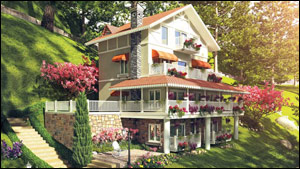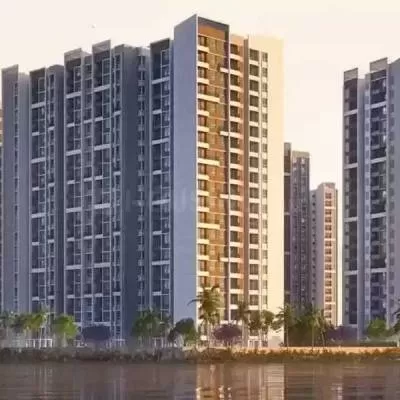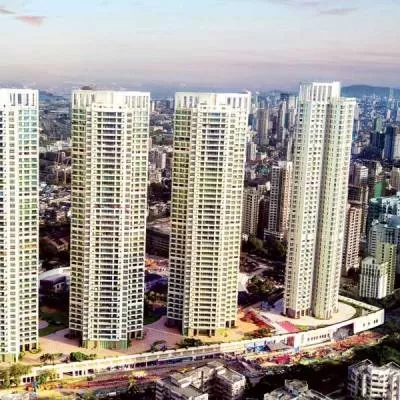- Home
- Real Estate
- Small Packet, Big Surprises

Small Packet, Big Surprises
For 28 year-old Gurgaon-based IT professional Aniruddha Rai, Bhopal is more than his hometown. The small and quiet lanes he grew up in have transformed themselves into a hustling city. Rai also managed to carve his share of the growth pie when he sensibly invested in a small piece of land in an upcoming part of the city that has now appreciated three times its original cost."I can easily pay off my education loan with this profit that I have made," beams Rai, advising on the new locales in Bhopal where one should invest in real estate.
Shifting focus
Rai is not the only one reaping the benefits of the growing profitability and prominence these Tier II and Tier III towns in India have managed to attain in a short span of time. Attracting investors from across the board, these towns and cities are slowly being transformed and gearing up to join the bigger league. The rapidly growing Indian economy is witnessing the emergence of new economic centres of consumption. So far the country's metros and Tier I cities were the hubs of economic activity; however, the focus is now shifting to the next 40 cities that are experiencing rapid urbanisation and economic growth. As a result of the migratory wave to urban pockets, mid-ticket and affordable housing segments are seeing the maximum demand pull.
The low-income segment of the residential market has also shown steady growth in smaller towns and cities.
Indeed, India has the highest rate of urbanisation among the BRIC nations 854 million people will live in Indian cities by 2050; more or less the combined population of present-day USA, Brazil, Russia, Japan and Germany. In the coming decade, India will add 95 million people to its already dense urban fabric, nearly one-fourth of its current urban population. Evidently, India needs more cities, and the ones growing now will grow exponentially in times to come."With globalisation and increasing international standards, many large builders are focusing on providing better returns to investors," says Rohit Kumar, Head-Research, DTZ India."This is done by analysing the future growth prospects and sector-specific demand. Systematic investment in segments such as commercial and IT/ITES office space, residential/low income housing, retail, hospitality and healthcare would generate highest returns over a period of time."
A recent study of top 10 emerging business destinations in India, conducted by Cushman & Wakefield, remarks that the growth in Tier II and Tier III cities is aided by "the increasing disposable income of the people that has created immense opportunities for companies looking out for new markets to grow". Moreover, ancillary and service industries such as IT/ITes and manufacturing industries being set up in these cities also play an important role for rise in property demand. The study also mentions that companies being drawn to these cities are being enticed owing to the "availability of talent pool at a lower cost, reasonable real-estate prices and a conducive business environment" created by state and local governments.
Cities to watch
The study identifies the cities of Ahmedabad, Bhubaneswar, Chandigarh, Coimbatore, Jaipur, Kochi, Indore, Nagpur, Vadodara and Visakhapatnam as the top 10 emerging cities of India. Whereas Coimbatore has more than 25,000 small and medium enterprises (SMEs), Vishakhapatnam has been found to be suitable for industries such as mining and heavy manufacturing. Jaipur has been counted as a significant service sector investment while Ahmedabad has been hailed as an attractive investment in the manufacturing sector.
Pradeep Jain, Chairman, Parsvnath Developers believes that these Tier II and Tier III cities offer availability of cost-effective land, improved infrastructure and skilled labour, encouraging developers to enter them. Parsvanath has a number of projects, which include residential, townships and retail projects, spread across Tier II and Tier III towns in the North and North-Western part of the country. And the past five years have seen the sector grow substantially."Demand projections in residential space across the top seven cities go up from 350,000 in 2010 to 600,000 in 2013," says Jain.
"Sectoral growth can be gauged from the fact that real estate and construction accounts for over 22 per cent of total FDI, up from less than 4 per cent in 2006."
Growth uninterrupted?
While the pace may not have matched the initial euphoria with which developmental activities were planned across these cities, the appetite for growth is still there as is the captive interest."Emerging Tier II and Tier III towns are witnessing a spurt in investment from all sectors," says Brotin Banerjee, Managing Director & CEO, Tata Housing."Among Tier II cities, Pune, Chandigarh, Ludhiana, Coimbatore, Bhubaneswar, Kochi, and Tier III cities, Madurai, Baroda, Nashik and Trichy, are upcoming in terms of social infrastructure and economic development. Moderate income class is growing in these cities and their aspirations are now well supported by expanding credit availability. This growth can be attributed to the rising investments across industries including IT and ITES, improvement in infrastructure, rapid industrialisation and opportunities arising out of it, and urban governance."
It is not just real estate and IT companies that have been making a beeline for these smaller centres of growth.
An increasing affinity for retail, better work-life balance and media exposure have been drawing a cross-section of sectors including BPOs, banks, FM channels and retail chains to establish their presence and increase profits. With global brands like Zara (recently opened at Virtuous Retail in Surat) and Marks & Spencer, global cosmetics giant MAC and luxury watch brand Omega establishing their presence, Tier II and Tier II towns have been waking up to a new horizon every day."What is important for these Tier II and Tier III cities is to have the right infrastructure to support the growth trajectory," says P Sahel, Vice Chairman, Lotus Green Developers, which has an interest in Tier II cities like Chandigarh and Ahmedabad."In the wake of increasing cost pressures in metro cities, large IT companies like TCS, Wipro, Infosys, Cognizant and Aegis are now setting up their offices in Tier II and Tier III cities."
Discovery of India
According to HVS Global Hospitality Service, with the increase in domestic travel, its positive effect on leisure hotel markets such as Goa, Jaipur, Agra, Udaipur and Kerala is visible. The seasonality of these markets is seen undergoing a change with difference in demand during peak and lean periods being bridged owing to a reduced reliance on international tourist arrivals. Growth in domestic tourist visits in 2012-13 (20 per cent) was higher than that recorded in 2011-12 (14 per cent) in comparison to their respective previous years. With the US dollar appreciating and holidays abroad becoming increasingly expensive, HVS expects hotels in leisure markets to continue tapping this segment. Also, the surge in domestic tourism will open up newer opportunities for development along India"s coastline in Maharashtra and Orissa, with other unexplored destinations and townships such as Lavasa standing to gain.
Viewed as excellent investment options, these places are more cost-effective than metros that have escalating property prices. Many people have already been investing in these cities for their second homes for aged parents for whom the fast-paced life of metros is a deterrent."Under the low price bracket, property prices in Tier II and Tier III cities are at least 50-60 per cent cheaper compared to Tier I cities like Delhi NCR, Mumbai, Bengaluru and Chennai," says Kumar.
With airports getting established in these cities, the improvement in connectivity has made them more accessible and hassle free. However, when it comes to investment, it is residential real estate that is still scoring above the other sectors."A lot of people buy property for nostalgic value, to have a presence in their hometowns and for pure investment opportunity," says Mudassir Zaidi, National Director, Residential Agency, Knight Frank.
Tier II and Tier III markets are primarily dominated by local players, a fact bigger players have realised gradually with the slowing economy."Major players are now going to realign their positions vis-a-vis unexplored territories," says Anuj Puri, Chairman & Country Head, Jones Lang LaSalle India."There is now a very clear realisation that it is extremely difficult to become a genuine pan-India player in every geography and real-estate segment. Moreover, developers today have woken up to the fact that there is only limited capital available to real-estate players today capital earmarked for residential projects, construction funding against achieved leases and signed contracts, or for cities displaying sufficient demand even in subdued market conditions."
Expert advice
"Developmental opportunities do exist in residential spaces where infrastructure is present and rightly placed," says Rami Kaushal, Senior Executive Director, CBRE South Asia."For the commercial and retail sector, one needs to be careful, especially in the IT sector as envisaged growth did not materialise. For large-scale office space, there is not much appetite and in the retail segment, the city centre-based small retail set-ups have some scope for growth." Experts also believe that demand-and-supply dynamics will play a key role in determining the growth opportunities these cities will provide, with other sectors following a pattern of population growth. The traction is there along with interest, which can be seen in the growth of cities like Hyderabad that is slowly treading the path of turning into a Tier I city from a Tier II one.
Sensing the appetite of development and gauging the appetite of the city will be instrumental in setting up growth drivers in these Tier II and tier III cities."Every town has an inherent potential and the smaller towns are expected to grow at around 10-12 per cent in times to come," says Salil Kumar, Director, Assotech Realty, which has just launched service residences in Shirdi and plans to launch more Goa and Katra because of the immense tourist potential. Of its pan-India plans to launch these service residences, a majority are being targeted for Tier II and Tier III cities.
Not surprisingly, rising disposable income and the desire to get away from the frenetic pace of city life are opening up new windows of growth for real estate in the hills."There is a robust demand for hill destinations," says Ananta Singh Raghuvanshi, Executive Director Marketing, DLF Universal."We have seen a mix of young people looking for second or holiday homes, such as entrepreneurs and self-employed professionals such as doctors and lawyers. We have Samavana and Samatara, the high-end luxury properties of DLF." For its part, Tata Housing too is planning to launch luxury vacation homes near Kasauli. Bright times ahead!
Popular segments in Tier II and Tier III TOWNS
- Commercial and IT/ITES office space
- Residential (luxury/mid-income housing/ low-income housing)
- Malls and shopping centres
- Healthcare (multi-facility hospitals/trauma centre)
- 3,4,5 star hotels
- Organised high streets
- Basic infrastructure (roads, transportation, water and electricity)
- SEZ (Special Economic Zones)
- NIMZ (National Industrial Manufacturing Zones)
For more details, view / download information on 11th Annual Construction World Global Awards 2013.
Growing urbanisation is pushing investors towards Tier II and Tier III cities to drive their growth story in a mutually beneficial way, writes GARIMA P. For 28 year-old Gurgaon-based IT professional Aniruddha Rai, Bhopal is more than his hometown. The small and quiet lanes he grew up in have transformed themselves into a hustling city. Rai also managed to carve his share of the growth pie when he sensibly invested in a small piece of land in an upcoming part of the city that has now appreciated three times its original cost.I can easily pay off my education loan with this profit that I have made, beams Rai, advising on the new locales in Bhopal where one should invest in real estate. Shifting focus Rai is not the only one reaping the benefits of the growing profitability and prominence these Tier II and Tier III towns in India have managed to attain in a short span of time. Attracting investors from across the board, these towns and cities are slowly being transformed and gearing up to join the bigger league. The rapidly growing Indian economy is witnessing the emergence of new economic centres of consumption. So far the country's metros and Tier I cities were the hubs of economic activity; however, the focus is now shifting to the next 40 cities that are experiencing rapid urbanisation and economic growth. As a result of the migratory wave to urban pockets, mid-ticket and affordable housing segments are seeing the maximum demand pull. The low-income segment of the residential market has also shown steady growth in smaller towns and cities. Indeed, India has the highest rate of urbanisation among the BRIC nations 854 million people will live in Indian cities by 2050; more or less the combined population of present-day USA, Brazil, Russia, Japan and Germany. In the coming decade, India will add 95 million people to its already dense urban fabric, nearly one-fourth of its current urban population. Evidently, India needs more cities, and the ones growing now will grow exponentially in times to come.With globalisation and increasing international standards, many large builders are focusing on providing better returns to investors, says Rohit Kumar, Head-Research, DTZ India.This is done by analysing the future growth prospects and sector-specific demand. Systematic investment in segments such as commercial and IT/ITES office space, residential/low income housing, retail, hospitality and healthcare would generate highest returns over a period of time. A recent study of top 10 emerging business destinations in India, conducted by Cushman & Wakefield, remarks that the growth in Tier II and Tier III cities is aided by the increasing disposable income of the people that has created immense opportunities for companies looking out for new markets to grow. Moreover, ancillary and service industries such as IT/ITes and manufacturing industries being set up in these cities also play an important role for rise in property demand. The study also mentions that companies being drawn to these cities are being enticed owing to the availability of talent pool at a lower cost, reasonable real-estate prices and a conducive business environment created by state and local governments. Cities to watch The study identifies the cities of Ahmedabad, Bhubaneswar, Chandigarh, Coimbatore, Jaipur, Kochi, Indore, Nagpur, Vadodara and Visakhapatnam as the top 10 emerging cities of India. Whereas Coimbatore has more than 25,000 small and medium enterprises (SMEs), Vishakhapatnam has been found to be suitable for industries such as mining and heavy manufacturing. Jaipur has been counted as a significant service sector investment while Ahmedabad has been hailed as an attractive investment in the manufacturing sector. Pradeep Jain, Chairman, Parsvnath Developers believes that these Tier II and Tier III cities offer availability of cost-effective land, improved infrastructure and skilled labour, encouraging developers to enter them. Parsvanath has a number of projects, which include residential, townships and retail projects, spread across Tier II and Tier III towns in the North and North-Western part of the country. And the past five years have seen the sector grow substantially.Demand projections in residential space across the top seven cities go up from 350,000 in 2010 to 600,000 in 2013, says Jain. Sectoral growth can be gauged from the fact that real estate and construction accounts for over 22 per cent of total FDI, up from less than 4 per cent in 2006. Growth uninterrupted? While the pace may not have matched the initial euphoria with which developmental activities were planned across these cities, the appetite for growth is still there as is the captive interest.Emerging Tier II and Tier III towns are witnessing a spurt in investment from all sectors, says Brotin Banerjee, Managing Director & CEO, Tata Housing.Among Tier II cities, Pune, Chandigarh, Ludhiana, Coimbatore, Bhubaneswar, Kochi, and Tier III cities, Madurai, Baroda, Nashik and Trichy, are upcoming in terms of social infrastructure and economic development. Moderate income class is growing in these cities and their aspirations are now well supported by expanding credit availability. This growth can be attributed to the rising investments across industries including IT and ITES, improvement in infrastructure, rapid industrialisation and opportunities arising out of it, and urban governance. It is not just real estate and IT companies that have been making a beeline for these smaller centres of growth. An increasing affinity for retail, better work-life balance and media exposure have been drawing a cross-section of sectors including BPOs, banks, FM channels and retail chains to establish their presence and increase profits. With global brands like Zara (recently opened at Virtuous Retail in Surat) and Marks & Spencer, global cosmetics giant MAC and luxury watch brand Omega establishing their presence, Tier II and Tier II towns have been waking up to a new horizon every day.What is important for these Tier II and Tier III cities is to have the right infrastructure to support the growth trajectory, says P Sahel, Vice Chairman, Lotus Green Developers, which has an interest in Tier II cities like Chandigarh and Ahmedabad.In the wake of increasing cost pressures in metro cities, large IT companies like TCS, Wipro, Infosys, Cognizant and Aegis are now setting up their offices in Tier II and Tier III cities. Discovery of India According to HVS Global Hospitality Service, with the increase in domestic travel, its positive effect on leisure hotel markets such as Goa, Jaipur, Agra, Udaipur and Kerala is visible. The seasonality of these markets is seen undergoing a change with difference in demand during peak and lean periods being bridged owing to a reduced reliance on international tourist arrivals. Growth in domestic tourist visits in 2012-13 (20 per cent) was higher than that recorded in 2011-12 (14 per cent) in comparison to their respective previous years. With the US dollar appreciating and holidays abroad becoming increasingly expensive, HVS expects hotels in leisure markets to continue tapping this segment. Also, the surge in domestic tourism will open up newer opportunities for development along Indias coastline in Maharashtra and Orissa, with other unexplored destinations and townships such as Lavasa standing to gain. Viewed as excellent investment options, these places are more cost-effective than metros that have escalating property prices. Many people have already been investing in these cities for their second homes for aged parents for whom the fast-paced life of metros is a deterrent.Under the low price bracket, property prices in Tier II and Tier III cities are at least 50-60 per cent cheaper compared to Tier I cities like Delhi NCR, Mumbai, Bengaluru and Chennai, says Kumar. With airports getting established in these cities, the improvement in connectivity has made them more accessible and hassle free. However, when it comes to investment, it is residential real estate that is still scoring above the other sectors.A lot of people buy property for nostalgic value, to have a presence in their hometowns and for pure investment opportunity, says Mudassir Zaidi, National Director, Residential Agency, Knight Frank. Tier II and Tier III markets are primarily dominated by local players, a fact bigger players have realised gradually with the slowing economy.Major players are now going to realign their positions vis-a-vis unexplored territories, says Anuj Puri, Chairman & Country Head, Jones Lang LaSalle India.There is now a very clear realisation that it is extremely difficult to become a genuine pan-India player in every geography and real-estate segment. Moreover, developers today have woken up to the fact that there is only limited capital available to real-estate players today capital earmarked for residential projects, construction funding against achieved leases and signed contracts, or for cities displaying sufficient demand even in subdued market conditions. Expert advice Developmental opportunities do exist in residential spaces where infrastructure is present and rightly placed, says Rami Kaushal, Senior Executive Director, CBRE South Asia.For the commercial and retail sector, one needs to be careful, especially in the IT sector as envisaged growth did not materialise. For large-scale office space, there is not much appetite and in the retail segment, the city centre-based small retail set-ups have some scope for growth. Experts also believe that demand-and-supply dynamics will play a key role in determining the growth opportunities these cities will provide, with other sectors following a pattern of population growth. The traction is there along with interest, which can be seen in the growth of cities like Hyderabad that is slowly treading the path of turning into a Tier I city from a Tier II one. Sensing the appetite of development and gauging the appetite of the city will be instrumental in setting up growth drivers in these Tier II and tier III cities.Every town has an inherent potential and the smaller towns are expected to grow at around 10-12 per cent in times to come, says Salil Kumar, Director, Assotech Realty, which has just launched service residences in Shirdi and plans to launch more Goa and Katra because of the immense tourist potential. Of its pan-India plans to launch these service residences, a majority are being targeted for Tier II and Tier III cities. Not surprisingly, rising disposable income and the desire to get away from the frenetic pace of city life are opening up new windows of growth for real estate in the hills.There is a robust demand for hill destinations, says Ananta Singh Raghuvanshi, Executive Director Marketing, DLF Universal.We have seen a mix of young people looking for second or holiday homes, such as entrepreneurs and self-employed professionals such as doctors and lawyers. We have Samavana and Samatara, the high-end luxury properties of DLF. For its part, Tata Housing too is planning to launch luxury vacation homes near Kasauli. Bright times ahead! Popular segments in Tier II and Tier III TOWNS Commercial and IT/ITES office space Residential (luxury/mid-income housing/ low-income housing) Malls and shopping centres Healthcare (multi-facility hospitals/trauma centre) 3,4,5 star hotels Organised high streets Basic infrastructure (roads, transportation, water and electricity) SEZ (Special Economic Zones) NIMZ (National Industrial Manufacturing Zones)For more details, view / download information on 11th Annual Construction World Global Awards 2013.




















